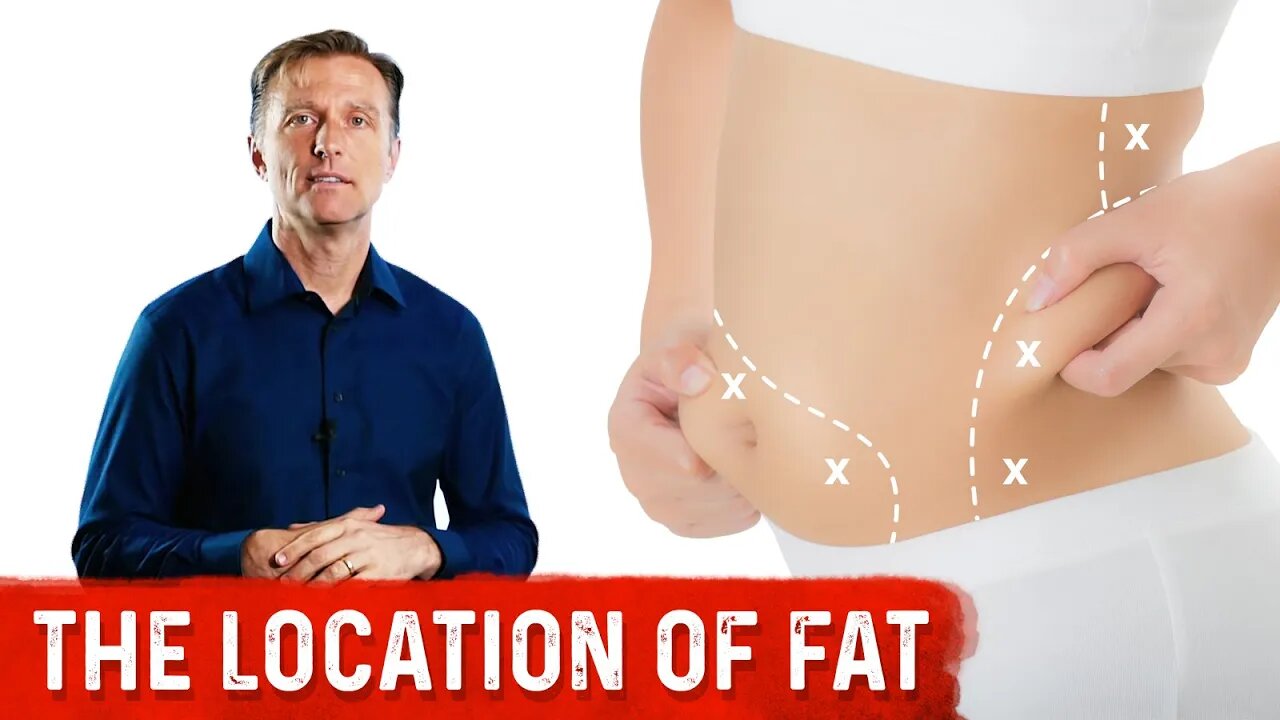Premium Only Content

Body Fat Location Can Predict Disease
Find out why men and women store fat differently—and how it affects your risk of disease.
HEALTHY KETOGENIC DIET AND INTERMITTENT FASTING:
https://www.drberg.com/healthy-keto-and-intermittent-fasting-plan
Timestamps
0:00 Introduction: Where your fat is on your body predicts disease
0:10 Subcutaneous vs. visceral fat
1:25 Adipose tissue and insulin resistance
2:30 How to address insulin resistance and excess body fat
3:19 Share your success story!
In this video, we’re going to talk about why where your fat is on your body can predict disease.
There is a significant difference in where men and women store fat. Women tend to have more subcutaneous fat, and men tend to have more visceral fat.
- Women -
• Subcutaneous fat
• Fat accumulates in the butt, hips, and thighs
• Less risk due to estrogen until menopause
- Men -
• Visceral fat
• Fat accumulates in the gut
• Higher risk of heart disease, diabetes, inflammation, insulin resistance, fatty liver, and other metabolic diseases
When a woman hits menopause, their estrogen lowers, which allows for more visceral fat to accumulate.
Adipose tissue is glandular. It provides storage for fuel, produces hormones, and has many other functions.
When you have insulin resistance, you can have it in different tissues, including you:
• Liver
• Muscles
• Pancreas
• Heart
Insulin resistance impairs the function of your fat cells, causing them to no longer accept fat. In turn, there’s a spillover effect. The fat then is stored in ectopic tissue—meaning it no longer goes into adipose tissue but instead into and around other organs.
This situation causes further resistance to insulin, creating a vicious cycle.
When you’re in this situation, the only way to address it is to go on a low-carb diet. This will help normalize your insulin levels and push your body into fat-burning mode.
If you try to lose weight without lowering your carbohydrates, you won’t fully resolve insulin resistance. Don’t focus on losing weight—focus on normalizing your insulin. If you can do that, your weight will normalize naturally.
If you’re new to Healthy Keto and intermittent fasting, check out my channel for more videos.
Dr. Eric Berg DC Bio:
Dr. Berg, age 57, is a chiropractor who specializes in Healthy Ketosis & Intermittent Fasting. He is the author of the best-selling book The Healthy Keto Plan, and is the Director of Dr. Berg Nutritionals. He no longer practices, but focuses on health education through social media.
Follow Me On Social Media:
Facebook: https://bit.ly/FB-DrBerg
Instagram: https://bit.ly/IG-DrBerg
Anchor: https://bit.ly/Anchor-DrBerg
TikTok: https://bit.ly/TikTok-DrBerg
Send a Message to his team: https://m.me/DrEricBerg
Disclaimer:
Dr. Eric Berg received his Doctor of Chiropractic degree from Palmer College of Chiropractic in 1988. His use of “doctor” or “Dr.” in relation to himself solely refers to that degree. Dr. Berg is a licensed chiropractor in Virginia, California, and Louisiana, but he no longer practices chiropractic in any state and does not see patients so he can focus on educating people as a full time activity, yet he maintains an active license. This video is for general informational purposes only. It should not be used to self-diagnose and it is not a substitute for a medical exam, cure, treatment, diagnosis, and prescription or recommendation. It does not create a doctor-patient relationship between Dr. Berg and you. You should not make any change in your health regimen or diet before first consulting a physician and obtaining a medical exam, diagnosis, and recommendation. Always seek the advice of a physician or other qualified health provider with any questions you may have regarding a medical condition.
#keto #ketodiet #weightloss #ketolifestyle
Thanks for watching. I hope this helped explain why where your fat is on your body can predict your risk of disease. I’ll see you in the next video.
-
 5:04
5:04
Dr. Eric Berg
5 days agoThis Will Piss You Off!
7.13K34 -
 LIVE
LIVE
Bannons War Room
3 months agoWarRoom Live
15,416 watching -
 LIVE
LIVE
Benny Johnson
1 hour agoTrump Speaking LIVE from White House Soon as LA Burns, Gavin Newsom PANIC | Massive Airliner Crash
7,004 watching -
 LIVE
LIVE
Discover Crypto
1 hour agoWAR SHOCK: Why Bitcoin Just Tanked (And What Comes Next)
271 watching -
 LIVE
LIVE
Akademiks
20 minutes agoDiddy Trial Day 22: Jane Doe aka 50 Cent Baby Moms Cross Examine. ALLSTAR FREEKOFF Day 4/30
1,197 watching -
 LIVE
LIVE
NEWSMAX
1 hour agoThe Gerry Callahan Show LIVE (06/12/2025) | NEWSMAX Podcasts
370 watching -
 UPCOMING
UPCOMING
The Big Mig™
2 hours agoMike Ritland, Former Navy SEAL & K9 Trainer, New York Times Bestselling Author
1805 -
 53:44
53:44
Brandon Gentile
22 hours ago45 Year Wall Street INSIDER: "$2M Bitcoin & $15K Gold just the START"
16 -
 1:09:34
1:09:34
Dear America
3 hours agoIRAN STRIKE IMMINENT?! US Braces For WWIII!! + Rioters Are Out Of State Paid Actors??
79.8K145 -
 10:23
10:23
Freedom Frontline
15 hours agoCNN Turns On The Mayor of LA in LIVE Interview
3.84K11